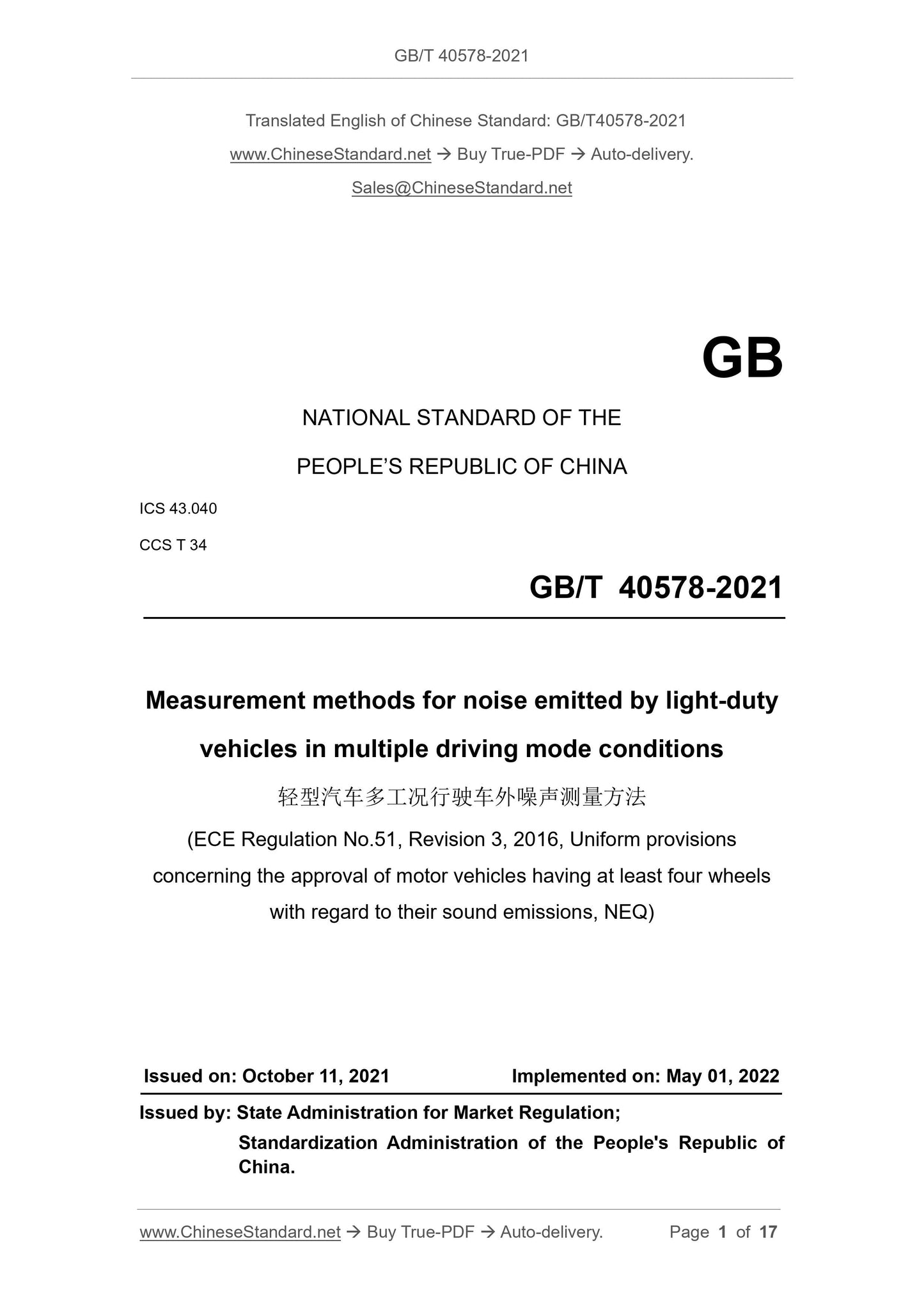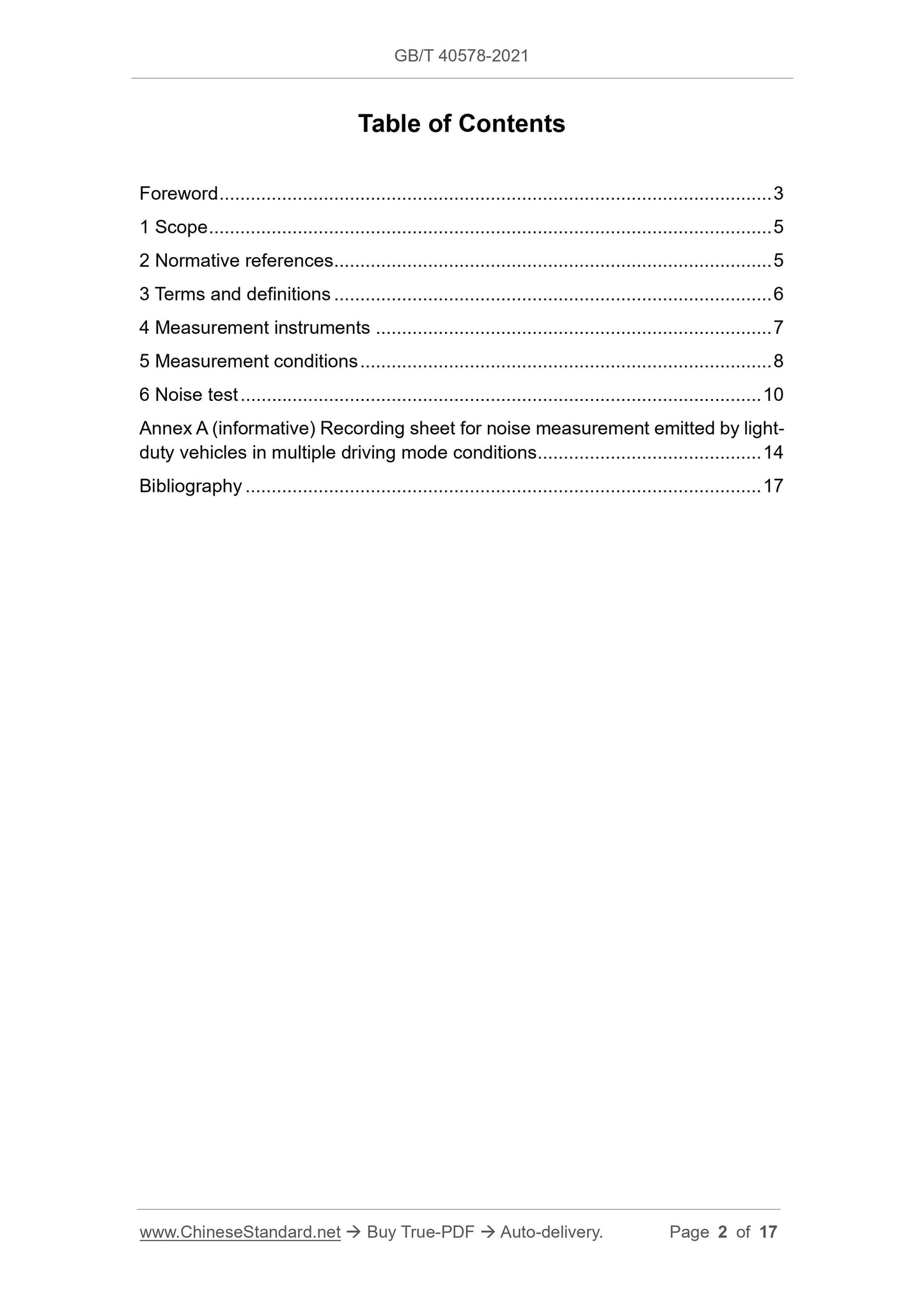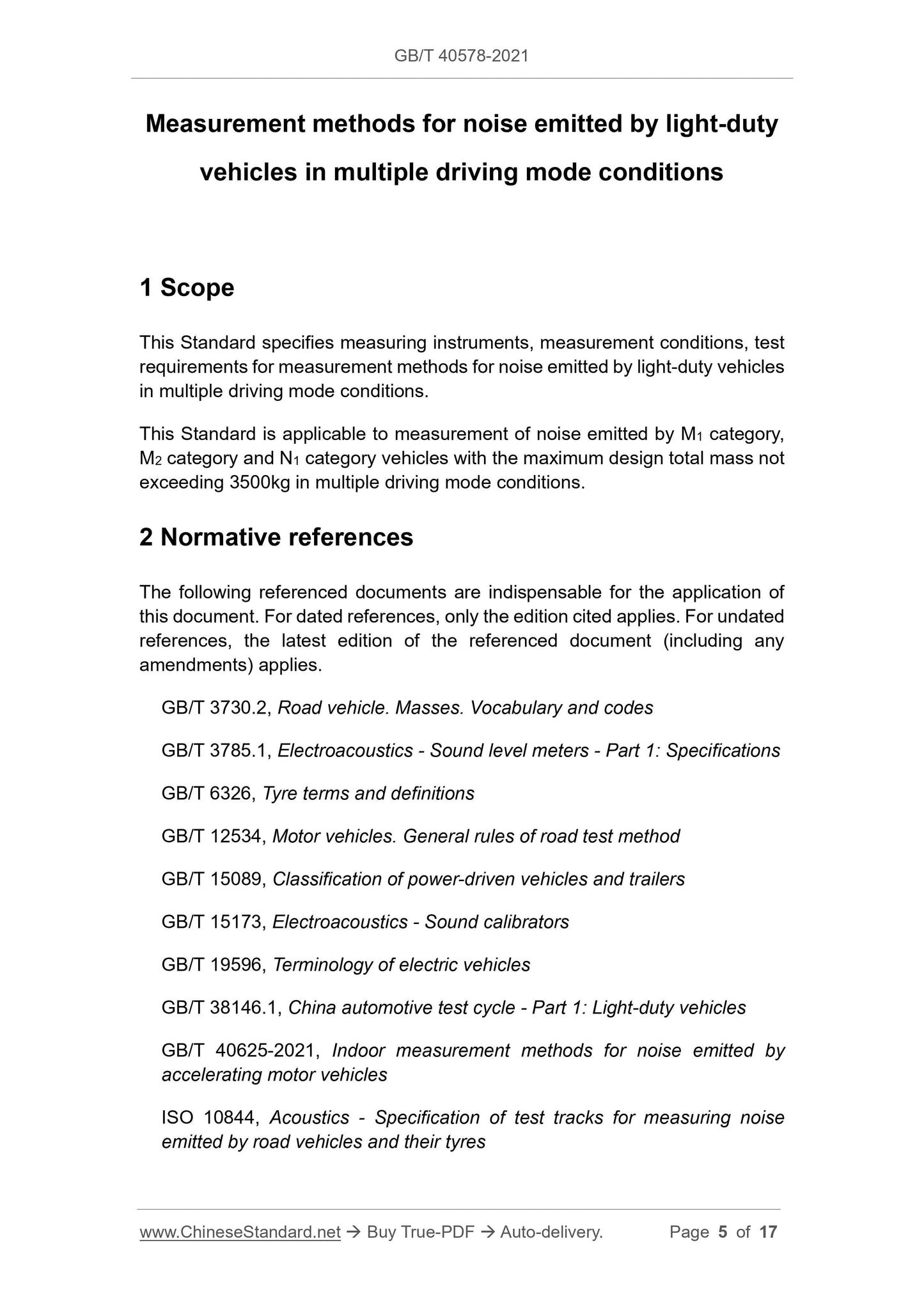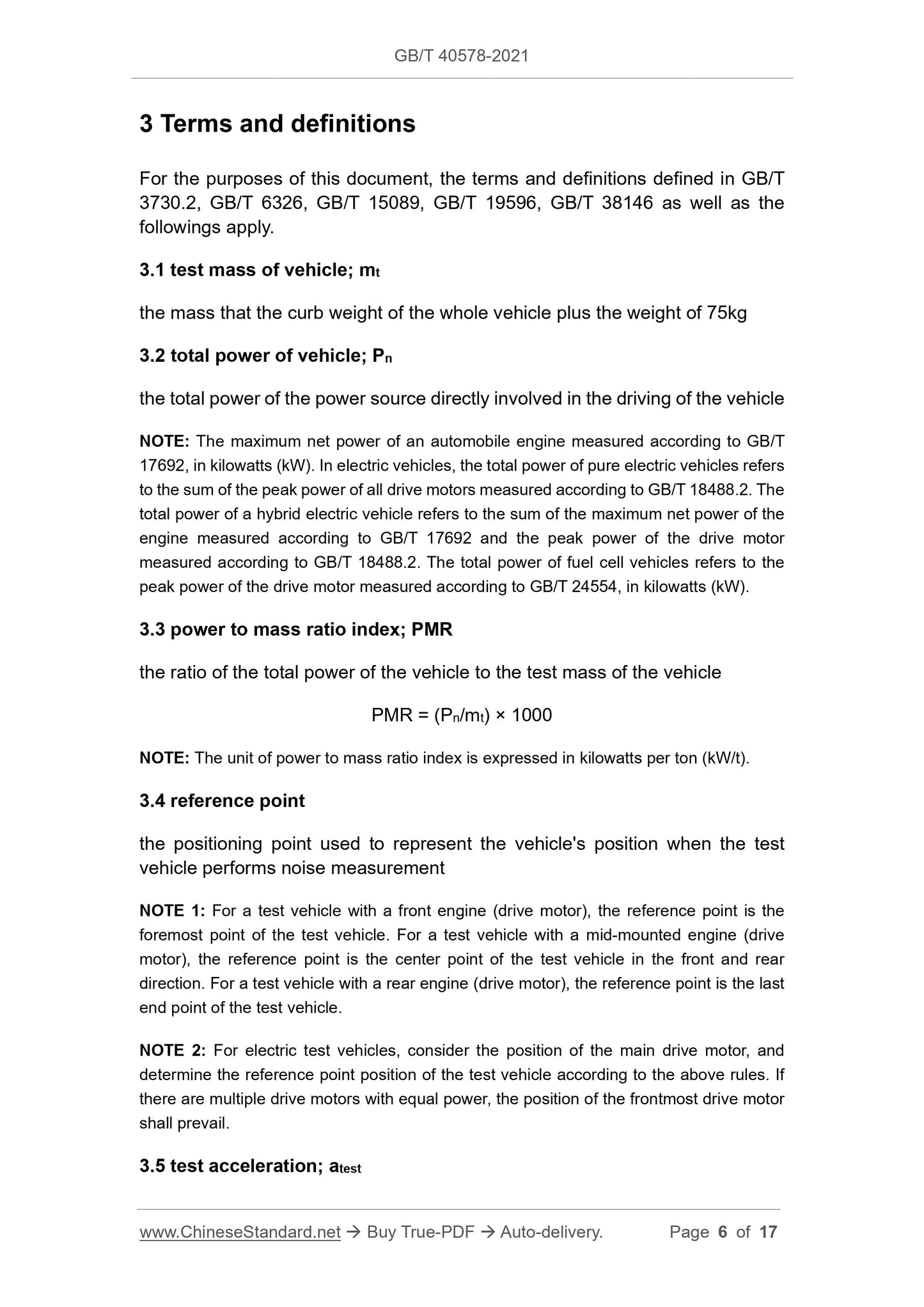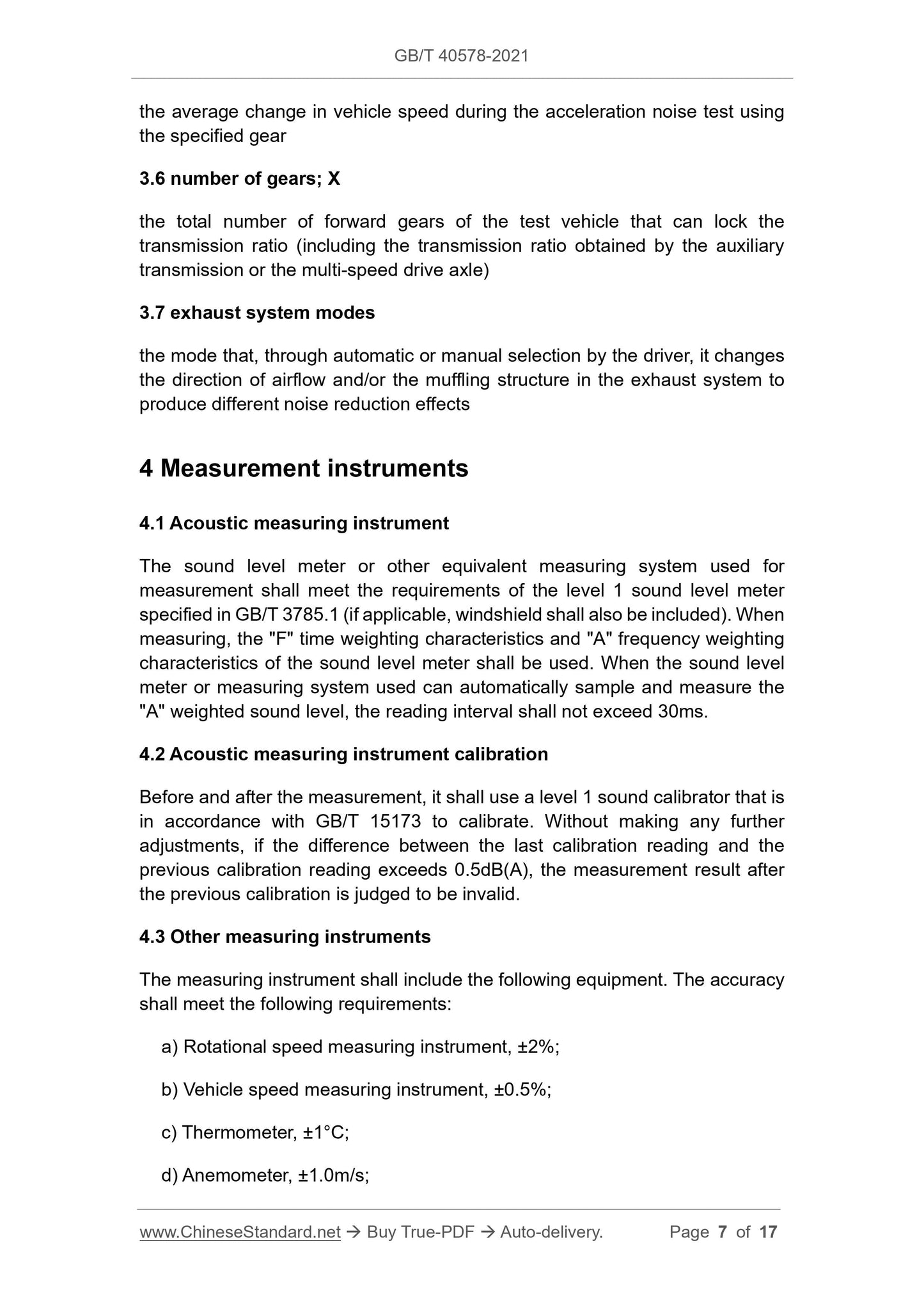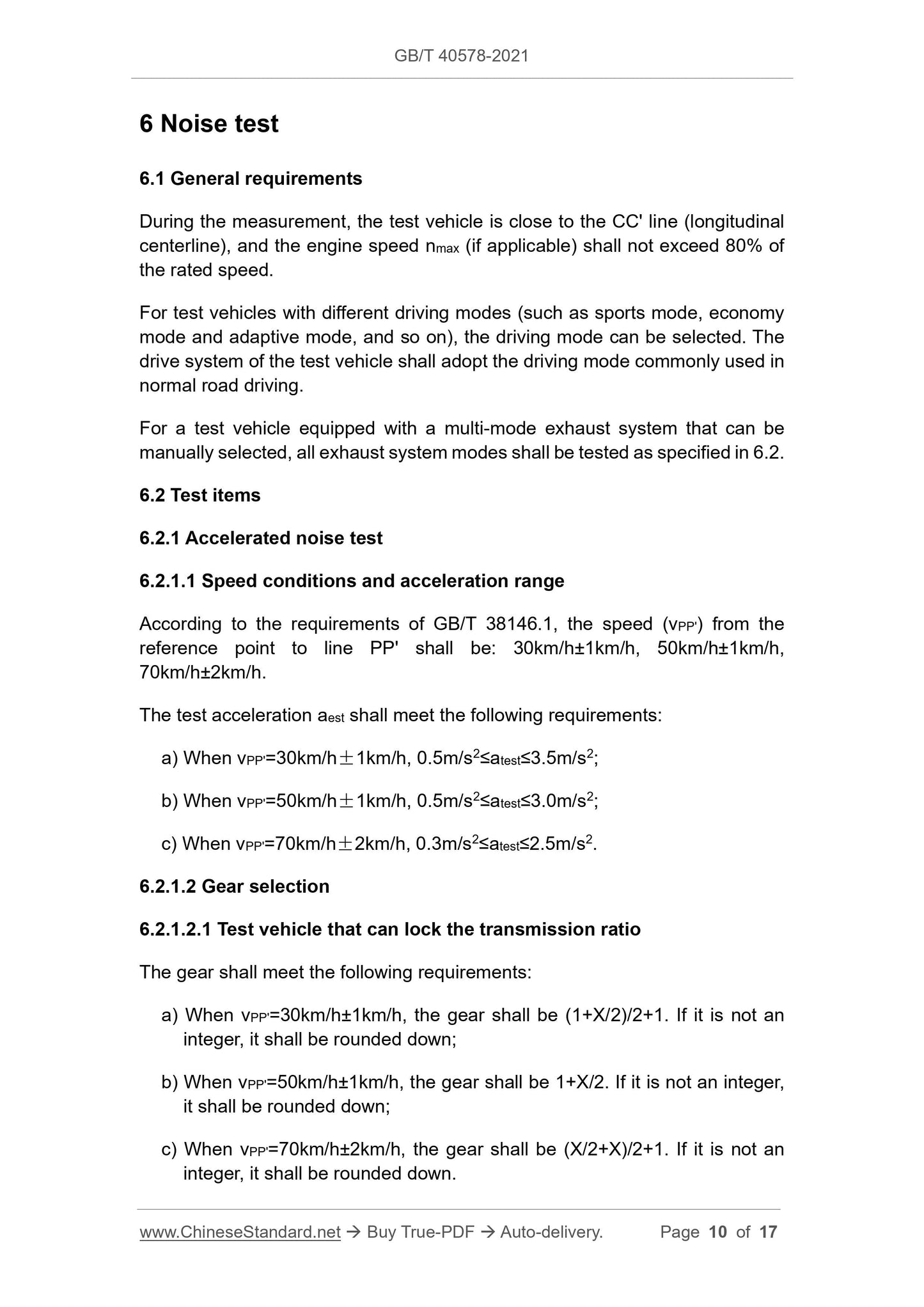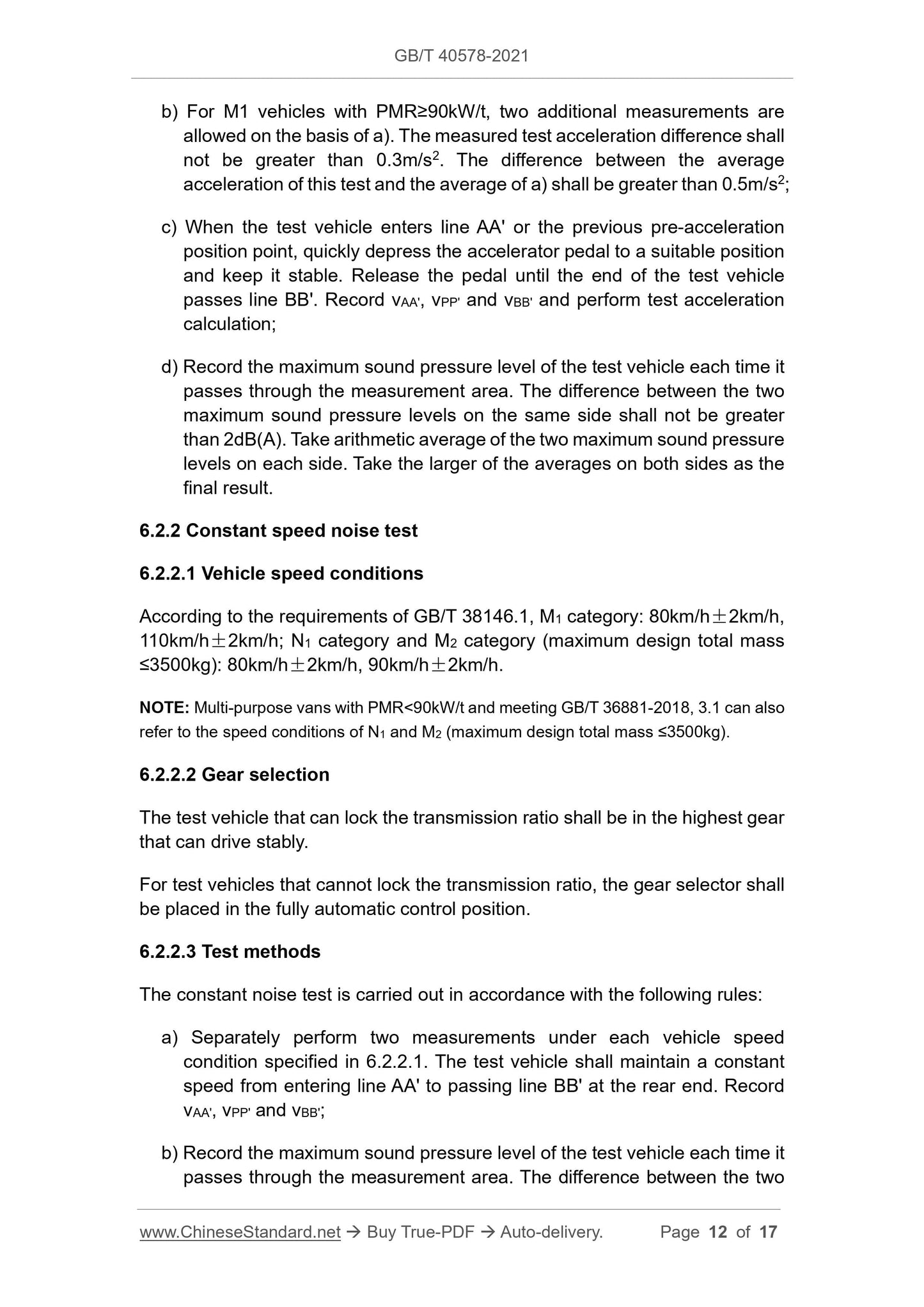1
/
of
7
www.ChineseStandard.us -- Field Test Asia Pte. Ltd.
GB/T 40578-2021 English PDF (GB/T40578-2021)
GB/T 40578-2021 English PDF (GB/T40578-2021)
Regular price
$185.00
Regular price
Sale price
$185.00
Unit price
/
per
Shipping calculated at checkout.
Couldn't load pickup availability
GB/T 40578-2021: Measurement methods for noise emitted by light-duty vehicles in multiple driving mode conditions
Delivery: 9 seconds. Download (and Email) true-PDF + Invoice.Get Quotation: Click GB/T 40578-2021 (Self-service in 1-minute)
Newer / historical versions: GB/T 40578-2021
Preview True-PDF
Scope
This Standard specifies measuring instruments, measurement conditions, testrequirements for measurement methods for noise emitted by light-duty vehicles
in multiple driving mode conditions.
This Standard is applicable to measurement of noise emitted by M1 category,
M2 category and N1 category vehicles with the maximum design total mass not
exceeding 3500kg in multiple driving mode conditions.
Basic Data
| Standard ID | GB/T 40578-2021 (GB/T40578-2021) |
| Description (Translated English) | Measurement methods for noise emitted by light-duty vehicles in multiple driving mode conditions |
| Sector / Industry | National Standard (Recommended) |
| Classification of Chinese Standard | T34 |
| Word Count Estimation | 11,131 |
| Issuing agency(ies) | State Administration for Market Regulation, China National Standardization Administration |
Share
